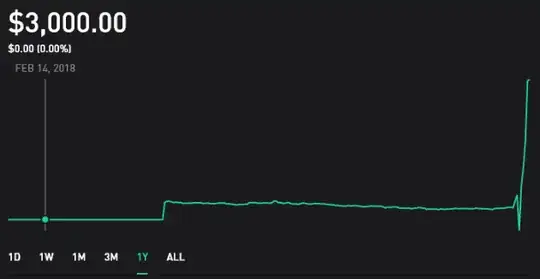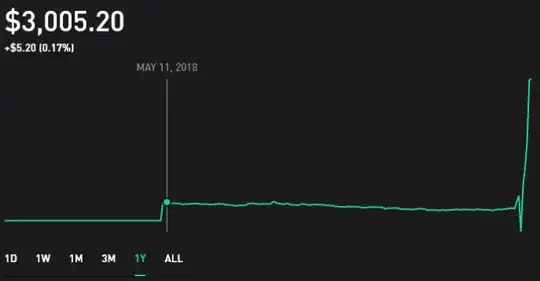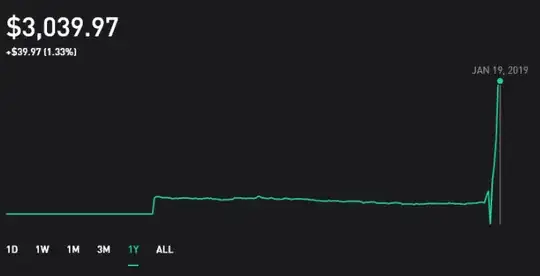I'm confused at what the Y-axis of Robinhood's account graph represents. It is not labeled.
It's showing $3,000 when hovering over a date well before I ever created an account on robinhood. I would expect this number to be $0.
In May 2018, I signed up for Robinhood and got one free stock worth around $5. It's showing $3,005.20 on my join date. I only expect the $5 free share to be there.
I didn't use Robinhood for the rest of 2018. Only in January 2019 did I transfer $3,000 in funds into Robinhood. I spent about $2000 on stocks within a week. This very last Y-axis number of $3,039.97 makes some slight sense to me. I bought at a local minimum and the stock market did increase ever since, probably by that $39.97 amount.
In other brokerage websites such as Fidelity, the Y-axis of the account graph is easier to understand. It is usually your cash + market value of investments. So you'll see blips when you fund the account from your bank. However, Robinhood seems to be showing only market value increases minus cash deposits. It's all very unfamiliar to me, so I wanted to ask this community to verify what exactly this is.


